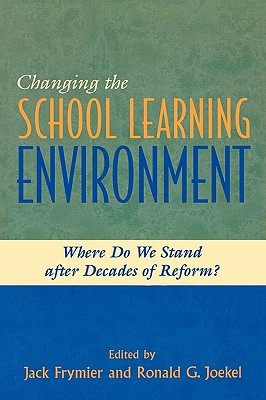
- We will send in 10–14 business days.
- Publisher: R & L Education
- Year: 2004
- ISBN-10: 1578861187
- ISBN-13: 9781578861187
- Format: 15.2 x 22.9 x 1.3 cm, softcover
- Language: English
- SAVE -10% with code: EXTRA
Changing the School Learning Environment (e-book) (used book) | bookbook.eu
Reviews
Description
The No Child Left Behind Legislation by the federal government led to another round of emphasis on public schools, resulting in a focus on school renewal or, as often termed, school reform. The National Association of Secondary School Principals in the 1960s initiated a concept for school renewal called The Model Schools Project (1969-1974). The MSP was the culmination of much of the seminal thinking on school renewal of that era. The project was directed by Dr. J. Lloyd Trump, NASSP secretary for research and development, and Dr. William D. Georgiades, professor of Education at the University of Southern California. After the MSP formally ended, Georgiades continued to provide leadership for school renewal as president of a follow-up consortium of schools and districts, the Learning Environments Consortium International. In Changing the School Learning Environment, Jack Frymier and Ronald Joekel take a look at the key concepts of the Model Schools Project and what has transpired during the past 30 plus years. Has it survived as initially conceived, evolved into something meaningful for contemporary schools, or failed as so many other innovations have done? A survey of best educational practices stemming from the Model Schools Project that promote school renewal and how they are being utilized today are also presented and discussed. Should appeal to educators and secondary school administrators.
EXTRA 10 % discount with code: EXTRA
The promotion ends in 18d.08:16:11
The discount code is valid when purchasing from 10 €. Discounts do not stack.
- Publisher: R & L Education
- Year: 2004
- ISBN-10: 1578861187
- ISBN-13: 9781578861187
- Format: 15.2 x 22.9 x 1.3 cm, softcover
- Language: English English
The No Child Left Behind Legislation by the federal government led to another round of emphasis on public schools, resulting in a focus on school renewal or, as often termed, school reform. The National Association of Secondary School Principals in the 1960s initiated a concept for school renewal called The Model Schools Project (1969-1974). The MSP was the culmination of much of the seminal thinking on school renewal of that era. The project was directed by Dr. J. Lloyd Trump, NASSP secretary for research and development, and Dr. William D. Georgiades, professor of Education at the University of Southern California. After the MSP formally ended, Georgiades continued to provide leadership for school renewal as president of a follow-up consortium of schools and districts, the Learning Environments Consortium International. In Changing the School Learning Environment, Jack Frymier and Ronald Joekel take a look at the key concepts of the Model Schools Project and what has transpired during the past 30 plus years. Has it survived as initially conceived, evolved into something meaningful for contemporary schools, or failed as so many other innovations have done? A survey of best educational practices stemming from the Model Schools Project that promote school renewal and how they are being utilized today are also presented and discussed. Should appeal to educators and secondary school administrators.


Reviews